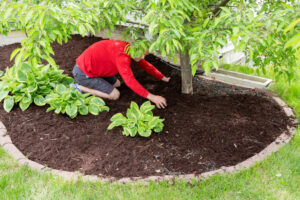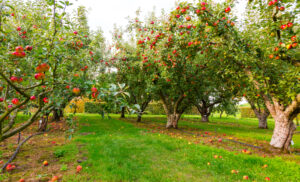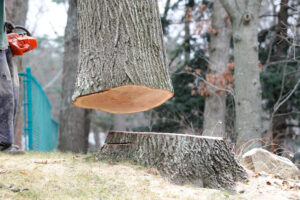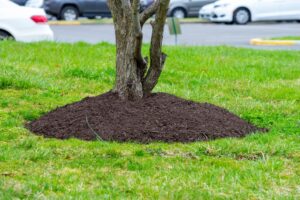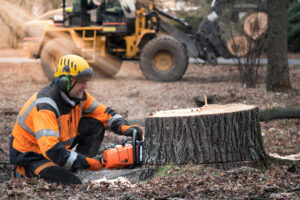Table of Contents
Like most people, you probably don’t think about tree pruning until it’s too late. By then, the branches had grown out of control, and it was a big job to take care of them. However, if you’re proactive about tree pruning, it’s a relatively quick and easy process that can be done to keep your trees looking their best. In this article, we’ll discuss common signs that your trees need pruning and how to do it safely and efficiently.
What Are Some Common Signs That Your Trees Need Pruning?
If you’re a homeowner, taking care of your trees should be a priority. Regular pruning can help maintain their health, encouraging growth and preventing weeds from taking hold. Knowing when to cut back tree branches is essential for preserving your trees’ overall appearance and lifespan.
Some common signs that it’s time to give them a trim include low-hanging branches, deadwood on the branches, suckers or water sprouts growing vertically out of the trunk, crossed or overlapping branches, and an uneven canopy shape.
If you need help evaluating whether or not your trees need pruning, consider seeking the advice of an arborist who can assess their condition and offer expert recommendations. Proper pruning done at the correct times can maximize the beauty and longevity of your landscape. With regular attention and care, you can ensure that your trees stay healthy and vibrant for years to come.
What Are the Benefits of Pruning Trees?
Pruning trees is an essential part of maintaining a healthy landscape. Pruning helps to promote growth, reduce the risk of disease, and improve your tree’s appearance.
To start, pruning increases photosynthesis in the tree by ensuring that more sun can reach the leaves; in turn, this leads to more excellent fruit production and healthier overall growth. Additionally, removing dead or dying branches prevents the disease from spreading throughout the tree.
Pruning also helps shape your trees into aesthetically pleasing forms while promoting air circulation and reducing disease risk. Although knowing when and how much to prune can be difficult, learning the proper technique will pay dividends down the road.
Pruning trees regularly offers numerous benefits and is an integral part of any gardening regimen. Ultimately, properly pruned trees are better equipped to survive environmental stressors and remain looking beautiful for years to come.
It should be noted that correct pruning techniques are essential if you don’t want to create more harm than good when caring for your trees, as over-pruning can throw off their natural balance resulting in weaker branches and stunted growth. For these reasons, it often makes sense to hire an experienced arborist for regular maintenance rather than attempting this work yourself.
How Should You Prune Your Trees Correctly to Ensure Their Health and Safety?
Properly pruning your trees is one of the best ways to keep them healthy and safe long term. Pruning is essential for removing dead, dying, or damaged branches that may create hazardous conditions and managing a tree’s overall growth pattern. Where and when you prune is critical for maintaining good structural integrity and minimizing stress on a tree.
Diseased or insect-infested limbs should permanently be removed first, followed by crossing branches or other areas of overcrowding that can cause rubbing and bark damage that leads to disease invasion. In addition, it’s important to avoid removing more than 25% of a tree’s living tissue with each pruning session while ensuring that scaffold branches are balanced with evenly spaced pairs along the main trunk. Lastly, remember to sharpen your tools often and never remove live branches needed for stability or aesthetic appeal within your landscape design. Appropriately done, proper pruning can help ensure your trees remain healthy and safe for years to come.
What Are the Potential Dangers of Not Pruning Your Trees Regularly and Properly?
One of the most important aspects of caring for trees is proper pruning. When done incorrectly, this activity can negatively impact your landscape and individual trees. In addition to decreasing aesthetic enjoyment, inadequate or improper pruning may cause injury, discourage new growth, increase the incidence and severity of diseases, create safety hazards by obstructing paths or driveways, weaken branches making them more susceptible to storm damage, and even shorten the life span of your trees far quicker than usual. For these reasons, it is essential to be sure that any tree pruning is done correctly by a trained professional arborist who can assess the situation accurately and consider factors such as species type and current health status. Not only will adequately pruned trees look better in your landscape, but they will also require less overall maintenance to help ensure their long-term health. Doing this preventive work now will pay dividends for years to come.
When Is the Best Time of Year to Prune Trees in Eastern Tennessee?
Pruning trees is a skillful job that should be done with care and consideration to promote these valuable assets’ health and safety. In Eastern Tennessee, the timing of tree pruning depends upon the specific species and its climate zone. For deciduous trees that lose their leaves seasonally, early spring before buds appear and after leaves have fallen from the trees, is the ideal time for pruning. It promotes rapid healing and stimulates vigorous new growth. Coniferous trees such as spruce, juniper, or pine varieties typically need less frequent pruning. However, if necessary for health risks or aesthetics, it can be best done in late winter when the sap flow is minimal.
Pruning later than summer can cause a flush of growth before cold temperatures, creating more risk of harm from seasonal weather changes. Be sure to research any variety before undertaking a pruning project in Eastern Tennessee and use tools designed specifically for proper tree maintenance and trimming practices. With careful consideration and planning, your pruning projects will result in healthy and beautiful trees year-round!
How Often Do You Need to Prune Your Trees for Them to Stay Healthy?
Proper pruning is essential for keeping a tree healthy and helping it reach its full potential. The frequency of pruning required can vary greatly depending on different factors, such as the species of the tree, its size and age, the severity of infestation or disease, and the time of year that pruning is being done. Small trees should be pruned every 3-4 years, medium-sized trees should be pruned every 4-6 years, and large trees should be pruned every 6-8 years. For young trees (1-3 years old), it may be beneficial to do some light shaping pruning each year to help them develop a strong structure. Additionally, branches that show signs of infestation or disease should always be trimmed back as soon as possible. By properly monitoring and maintaining your trees in this way, you can keep them looking their best while ensuring they remain healthy for many years to come.
If you’re unsure whether your trees need pruning or how to do it properly, our team at Tri-Cities Tree Guy is here to help. We offer tree pruning services throughout Eastern Tennessee and can help keep your trees healthy and looking great. Give us a call today!

